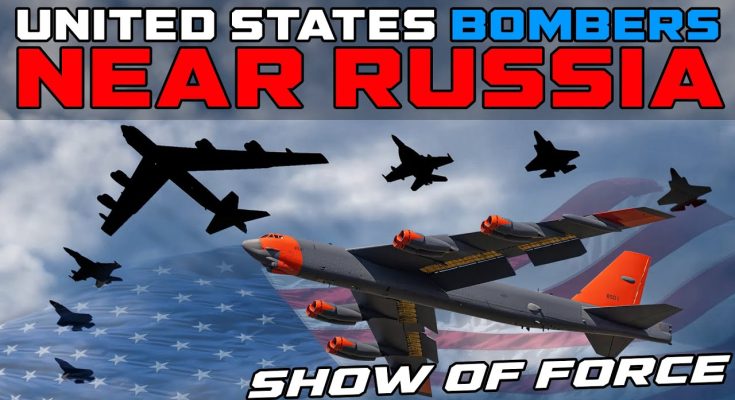On February 27, 2025, several U.S. military aircraft conducted a significant flyover over Estonia, near its border with Russia, as part of a joint exercise demonstrating NATO’s readiness and commitment to the defense of Eastern Europe. The aircraft involved in the operation included the iconic B-52 Stratofortresses, the versatile F/A-18 Super Hornets, and the stealthy F-35B Lightning IIs. This high-profile demonstration sent a clear message of deterrence to Russia while underscoring the strong alliance between NATO forces, particularly in the context of the ongoing geopolitical tensions in the region.
The B-52 Stratofortresses, long-range strategic bombers that are a cornerstone of the United States Air Force’s global reach, led the mission. These bombers are capable of carrying a wide variety of payloads, including conventional and nuclear weapons, making them a key component of the U.S. and NATO’s strategic deterrence posture. Flying near the Russian border, the B-52s were likely there to reassure NATO allies of the United States’ ability to respond swiftly and decisively in times of crisis, reinforcing NATO’s nuclear umbrella and signaling to Russia the alliance’s readiness to defend its members.
Accompanying the B-52 bombers were the F/A-18 Super Hornets, which are multirole fighter jets primarily used by the U.S. Navy. The F/A-18 Super Hornet is known for its versatility, able to perform both air-to-air and air-to-ground missions. Their role in this flyover was to provide additional air superiority capabilities, ensuring that NATO forces maintain control of the skies and can quickly respond to any threats. In particular, the Super Hornets, with their robust avionics and weapon systems, help bolster NATO’s operational flexibility in the region, which is crucial given the unpredictable security environment around the Baltic Sea and Eastern Europe.
The F-35B Lightning IIs, another critical component of the flyover, added a layer of technological sophistication to the operation. The F-35B, a short takeoff and vertical landing (STOVL) variant of the fifth-generation F-35 fighter jet, is equipped with cutting-edge stealth technology, advanced sensors, and precision strike capabilities. Its deployment was particularly significant as the F-35’s stealth capabilities allow it to operate in contested environments where radar and other tracking systems would normally be a challenge. The F-35B’s ability to operate from shorter runways, such as those in the Baltic states, further enhances its value to NATO in the event of a crisis.
The strategic importance of the location, near Estonia’s eastern border with Russia, cannot be overstated. Estonia, a NATO member since 2004, shares a long border with Russia, making it a critical point in the alliance’s defense strategy. The proximity of this flyover to Russia’s borders underscores the growing concerns over Moscow’s military activities in the region and highlights NATO’s continued efforts to reinforce the security of its easternmost members. With the ongoing war in Ukraine and heightened military activity along NATO’s eastern flank, this flyover is seen as a clear demonstration of NATO’s resolve to defend its territory against any aggression.
Furthermore, the exercise was a testament to the interoperability and cohesion of NATO’s air forces. The coordination between U.S. bombers, Navy fighter jets, and fifth-generation fighters demonstrates the alliance’s capability to operate in a highly integrated manner, ensuring that NATO forces can respond to any threats quickly and efficiently. These joint operations are critical to maintaining a strong deterrence posture and ensuring that NATO remains a formidable force against any adversaries.
In conclusion, the flyover over Estonia was a powerful display of NATO’s military readiness and a clear message to Russia about the alliance’s unwavering commitment to collective defense. The deployment of such a diverse and technologically advanced array of aircraft reflects NATO’s strategic priorities in the region, reinforcing the alliance’s ability to deter aggression and, if necessary, respond decisively to any threats. As geopolitical tensions continue to simmer, NATO’s military presence in Eastern Europe will remain crucial to maintaining stability and security in the region.



